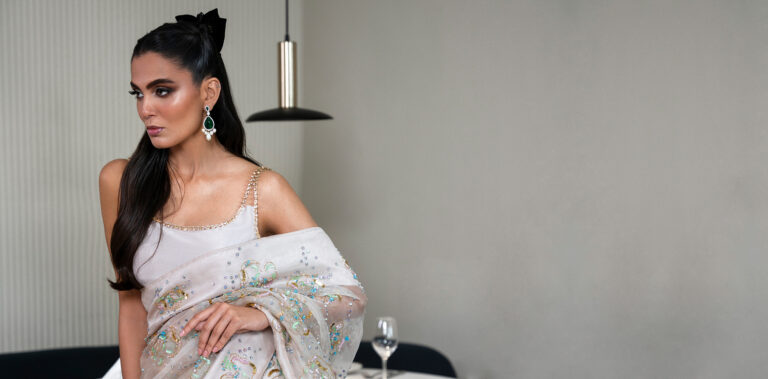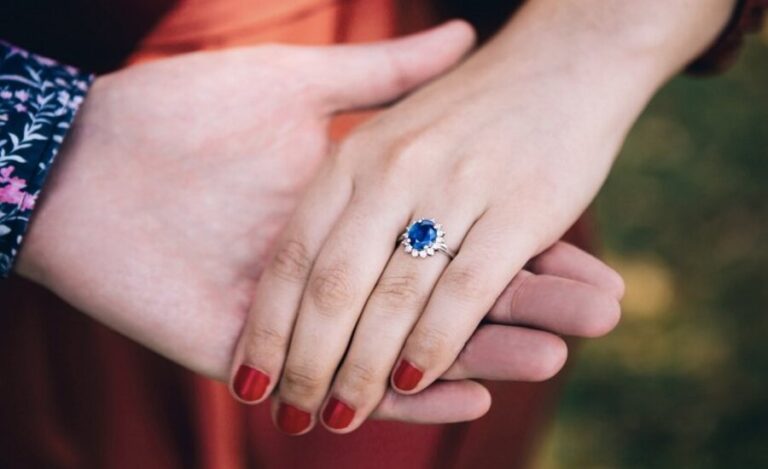The Importance of the Dirndl Dress in Traditional Bavarian Clothing
The dirndl dress is much more than a colorful outfit for Oktoberfest or an accessory for Alpine tourism; it represents centuries of cultural tradition, craftsmanship, and regional pride. As part of traditional Bavarian clothing, the dirndl dress is a symbol of identity, community, and heritage. Passed down through generations and evolving over time, the Dirndl dress remains a beloved garment that connects the past with the present, making it a significant part of Bavaria’s cultural landscape. This article will dive deep into the history, evolution, and cultural importance of the dirndl dress and its place in traditional Bavarian clothing.
The Historical Origins of the Dirndl Dress
The dirndl dress dates back to the late 18th and early 19th centuries, when it was worn by the peasant women of the Alpine regions of Bavaria and Austria. At the time, the dirndl dress was not considered fashionable but rather a practical and functional outfit. Its design was meant to be durable, offering protection from the harsh mountain climate, while allowing the wearer to work in the fields or households. The traditional dirndl dress consisted of a fitted bodice, a blouse, a full skirt, and an apron. These elements created a balanced look that was both modest and utilitarian.
Over time, the dirndl dress became associated with rural life and was considered a symbol of the Bavarian countryside. As the 19th century progressed, however, the popularity of the dirndl dress began to grow among the upper classes. Wealthy women began adopting the dress, particularly during the Romantic period when there was a resurgence of interest in rural life and rustic simplicity. Wearing a dirndl dress became a way for the bourgeoisie to embrace an idealized version of peasant life, and it gradually transitioned from peasant wear to traditional Bavarian clothing with cultural and regional significance.
Traditional Bavarian Clothing – The Role of the Dirndl Dress
Traditional Bavarian clothing has always been a way to express regional identity, and the dirndl dress has become one of the most iconic symbols of Bavarian culture. Just like lederhosen for men, the dirndl dress serves as a marker of Bavarian traditions, worn during festivals, celebrations, and other special occasions. One of the key aspects of traditional Bavarian clothing is its connection to local communities and family heritage. Each region in Bavaria developed its own specific styles of dirndls and trachten, often including intricate embroidery, unique color schemes, and different fabrics to reflect local tastes and materials.
For Bavarian families, wearing the dirndl dress is often a way to honor their roots. Grandmothers, mothers, and daughters pass down these garments from one generation to the next, with each dirndl dress carrying with it stories of family events, holidays, and even hardships. This makes the dirndl dress a deeply personal symbol, intertwining individual identity with the larger Bavarian cultural heritage.
Representing Regional Pride
In Bavaria, the dirndl dress and other elements of traditional Bavarian clothing are worn to represent pride in the local culture. Festivals like Oktoberfest, weddings, and religious holidays often see women donning the dirndl dress to show their connection to the region. Many people feel that wearing a dirndl dress is a way of keeping their traditions alive and preserving Bavarian customs for future generations. Wearing a dirndl dress to these events means more than simply wearing an attractive garment; it’s about expressing pride in the heritage of Bavaria. The people who wear traditional Bavarian clothing are often seen as cultural ambassadors, embodying the values and traditions that have been cherished for centuries.
The Evolution of the Traditional Bavarian Clothing
As with all aspects of fashion, the dirndl dress has not remained static over the centuries. Its style, fabrics, and patterns have evolved, making it one of the most versatile elements of traditional Bavarian clothing. While the dirndl dress remains deeply tied to Bavarian traditions, it has adapted to modern trends and influences.
Modern Dirndl Dresses – Blending Tradition with Personal Style
The modern dirndl dress has become a canvas for individual expression while maintaining its ties to traditional Bavarian clothing. Designers today play with color palettes, lengths, and accessories to create a diverse range of dirndls, allowing wearers to express their unique styles while staying connected to tradition.
For example, contemporary dirndl dresses might feature bold, modern colors such as teal, magenta, or deep purple. Designers also experiment with the fabrics, offering everything from lightweight summer dirndls made from cotton to more luxurious versions made of silk or velvet for formal occasions. One thing that remains consistent across both modern and traditional dirndl dresses is their structure: the bodice, blouse, full skirt, and apron. Even as details change, the foundational silhouette of the dirndl dress endures, a nod to its long history in traditional Bavarian clothing.
How to Wear a Dirndl – Symbolism and Tradition
The dirndl dress isn’t just about style; how you wear it matters, too. In Bavarian culture, where you tie the apron bow on a dirndl dress carries specific meaning. Tying the bow on the left side indicates that the wearer is single, while tying it on the right side shows that she is married or in a committed relationship. A bow tied at the center signifies that the wearer is a virgin, while a bow tied at the back signifies widowhood. These small but important details are part of the tradition and social norms connected to traditional Bavarian clothing. When attending Bavarian festivals or gatherings, locals are sure to pay attention to these details, ensuring that their attire reflects the correct status and adheres to the cultural etiquette.
The Cultural Importance of the Dirndl Dress in Modern Bavaria
The dirndl dress holds a unique place in Bavarian culture today, serving not just as a symbol of the past but also as a bridge to the future. As Bavaria has modernized, many aspects of its culture have changed, but the importance of traditional Bavarian clothing like the dirndl dress has remained constant. For many Bavarians, wearing a dirndl dress is a way to maintain a connection to their heritage, even in a rapidly changing world. Whether worn at a family gathering or at a major event like Oktoberfest, the dirndl dress offers a tangible link to the region’s history and traditions.
Family and Heritage – Passing Down the Dirndl Dress
In many Bavarian families, the dirndl dress is a cherished heirloom passed down from mother to daughter, symbolizing the connection between generations. This transmission of the dirndl dress helps maintain a sense of continuity within families and communities.
I’ve seen this in my own life. As the granddaughter of German immigrants, I’ve often felt that wearing my dirndl dress connects me to my grandparents’ legacy. After my grandmother passed away, I wore a dirndl dress she had bought for me during a trip to Germany at her funeral.
It felt like a way to honor her life and the traditions she held dear. Similarly, when my grandfather passed, I wore the same dirndl dress, but with a new apron I had sewn myself as a tribute to his creativity. These experiences show that the dirndl dress isn’t just a piece of clothing; it’s a way to keep family traditions alive. Each time I put on my dirndl dress, I’m reminded of the values and stories that my grandparents passed down to me. It’s a connection to their past, but also a way of bringing that past into the present.
Cultural Pride – Wearing the Dirndl Dress at Oktoberfest
Oktoberfest is the world’s most famous Bavarian festival, and the dirndl dress plays a central role in the festivities. Every year, locals and visitors alike don their finest dirndls and lederhosen to celebrate Bavarian culture. For those who wear a dirndl dress to Oktoberfest, it’s more than just a festive outfit—it’s a declaration of pride in their cultural roots.
Tourists often buy dirndl dresses to fit in with the locals, but for many Bavarians, the dirndl dress holds much deeper meaning. It’s a way to honor Bavarian traditions, history, and craftsmanship. Wearing a dirndl dress at Oktoberfest is seen as a symbol of respect for the event’s origins and an opportunity to celebrate Bavarian culture in all its forms. Visitors who wear dirndl dresses at Oktoberfest often report feeling a greater sense of belonging and connection to the culture. Many find that wearing a dirndl dress allows them to experience Bavarian traditions firsthand, reinforcing the power of traditional Bavarian clothing to bring people together.
The Craftsmanship Behind Traditional Bavarian Clothing
In addition to its cultural importance, the dirndl dress is also a showcase of Bavarian craftsmanship. Handmade dirndls are often crafted with intricate embroidery, lace detailing, and high-quality fabrics, reflecting the region’s long-standing tradition of fine tailoring.
In some cases, dirndl dresses are custom-made for the wearer, ensuring a perfect fit and a personal connection to the garment. These hand-stitched dirndls are not only a fashion statement but also a celebration of Bavarian artisanship. The careful attention to detail and use of high-quality materials ensures that these dirndl dresses are durable, making them perfect for handing down to future generations.
When selecting a dirndl dress, it’s important to consider the occasion, the level of formality, and your personal style. For formal events like weddings or religious ceremonies, a more traditional dirndl dress with rich fabrics and intricate details may be appropriate. On the other hand, for festivals like Oktoberfest, a lighter, more colorful dirndl dress might be a better fit. Regardless of the style, the dirndl dress you choose will be a representation of Bavarian culture and tradition. Even if you opt for a modern twist on the classic design, the essence of traditional Bavarian clothing will still be present in the structure, symbolism, and heritage that the dirndl dress represents.
Conclusion – The Timeless Significance of the Dirndl Dress in Traditional Bavarian Clothing
The dirndl dress has transformed over the centuries, from simple peasant attire to an iconic element of traditional Bavarian clothing. Today, it continues to play a vital role in Bavarian culture, connecting individuals to their family history, regional identity, and community pride. Whether worn for personal reasons, family gatherings, or grand festivals like Oktoberfest, the dirndl dress remains a powerful symbol of cultural heritage and tradition. The versatility of the dirndl dress ensures that it can adapt to modern fashion trends while still honoring the past. As a result, it will likely continue to be a beloved part of traditional Bavarian clothing for generations to come, a testament to the enduring value of tradition in a rapidly changing world.






